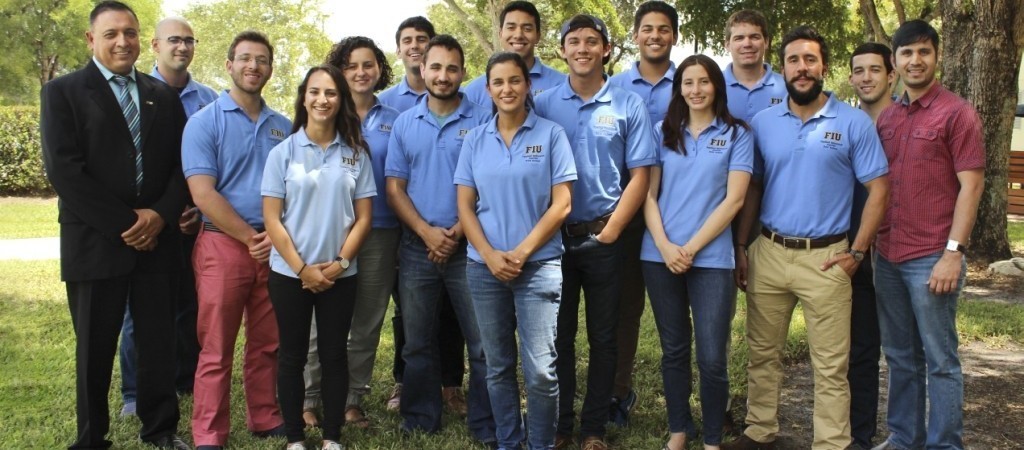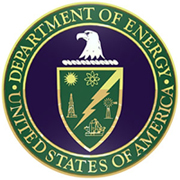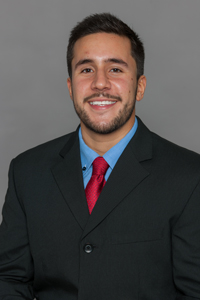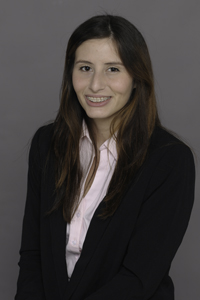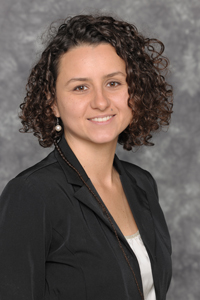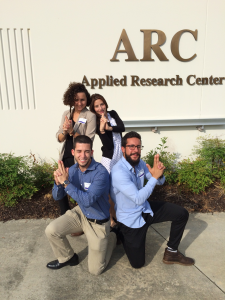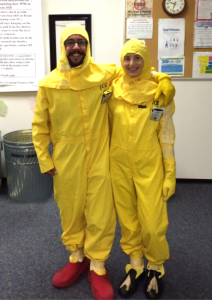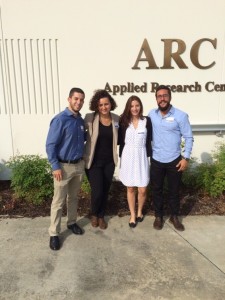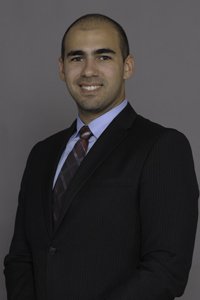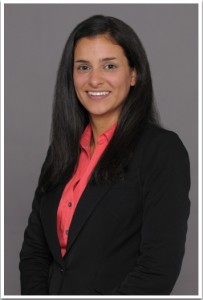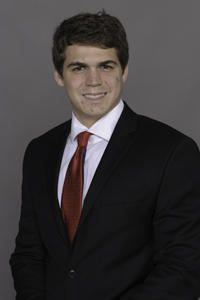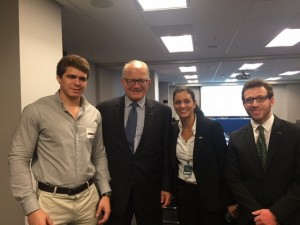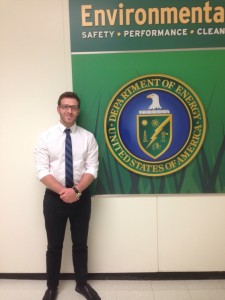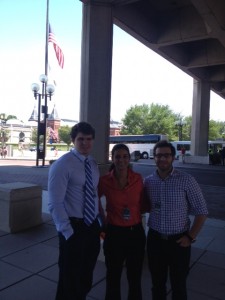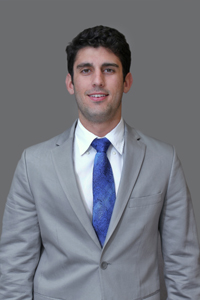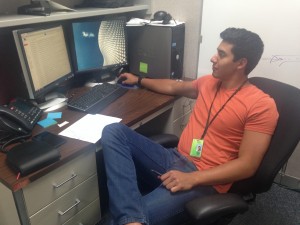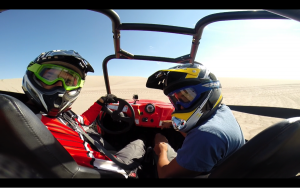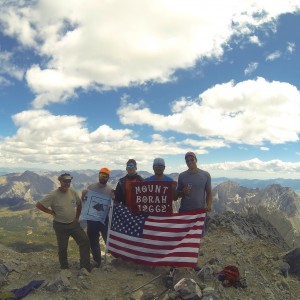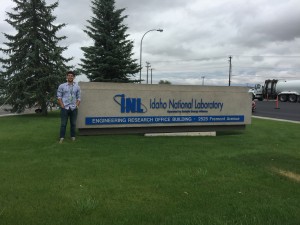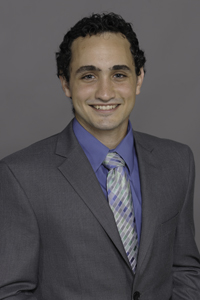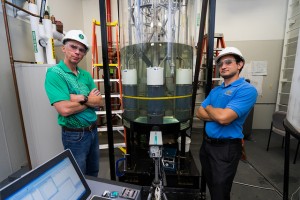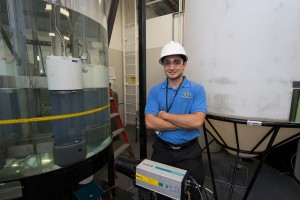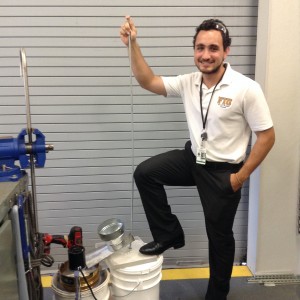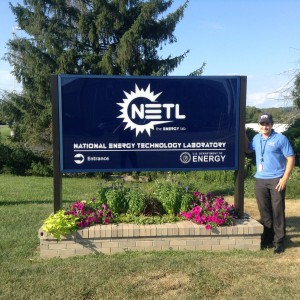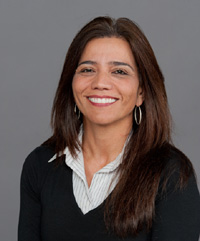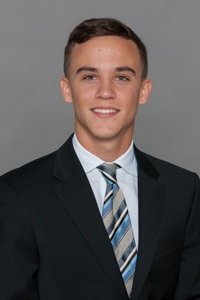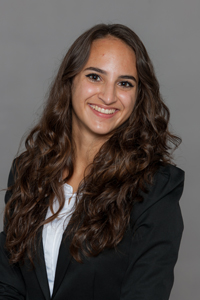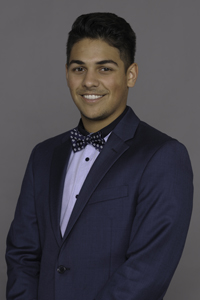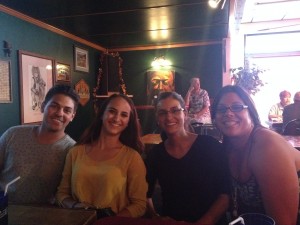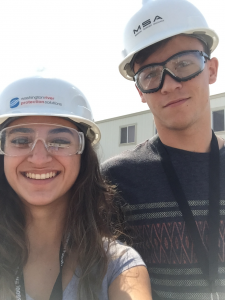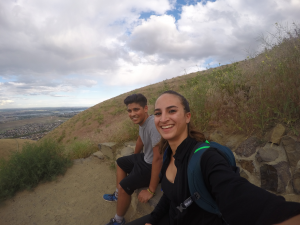A total of 15 FIU DOE Fellows began their summer 2015 internships during the month of June. The 10-week internships are conducted as part of the requirements for the DOE Fellows Program (http://fellows.fiu.edu ) sponsored by the US Department of Energy (DOE) where FIU STEM students are exposed first hand to DOE’s Office of Environmental Management (DOE-EM) environmental restoration mission of the US Nuclear Weapons Complex. This summer, our DOE Fellows are interning at Savannah River National Lab (Aiken, SC), Oak Ridge National Lab (Oak Ridge, TN), DOE Headquarters in DC (Forrestal) and Maryland (Cloverleaf), Idaho National Lab (Idaho Falls, Idaho), National Energy Technology Lab (Morgantown, WV), Pacific Northwest National Lab (Richland, Washington State), and Washington River Protection Solutions (Richland, Washington State). A summary of their internship assignments and DOE summer mentors is shown below:
Aiken, South Carolina – DOE’s Savannah River Site/Savannah River National Lab
DOE FELLOW: Aref Shehadeh – Environmental Engineering Major
MENTOR: Dr. Miles Denham
Aref Shehadeh (DOE Fellow – Class of 2014) is currently interning with the Department of Energy Office of Environmental Management (DOE EM) at the Savannah River Site (SRS) located in Aiken, South Carolina. Construction at SRS first began in the 1950’s, with a total of five reactors producing base materials for nuclear weapons on the 310 square mile site. Since then, these reactors have been decommissioned and the site is now involved in an extensive clean-up/remediation initiative. Aref is working on this remediation initiative under the mentorship of Dr. Miles Denham with the Savannah River National Laboratory (SRNL). Dr. Denham received his Ph.D. from Texas A&M in geology and has been with SRNL for over 20 years, with a specialization in geochemistry of natural systems and remediation of metals and radionuclides. The project that Aref is working on involves the remediation of iodine-129 (I-129) in the SRS F-Area caused by a large radionuclide plume stemming from an old seepage basin. Dr. Denham has proposed the use of silver chloride (AgCl) to react with the I-129 in the sediments to create a binding effect and prevent further spreading of the plume. Aref will be researching the particle size and structure of AgCl, created in a laboratory setting, and will help determine the optimal size to use for future in-situ remediation. In addition, he will be observing whether the I-129 can bind to the entire AgCl particle or if it only reacts on the particle’s surface.
DOE FELLOW: Jorge Deshon – Computer Engineering Major
MENTORS: Mr. John Bobbitt and Mr. Steven Tibrea
Jorge Deshon (DOE Fellow – Class of 2014) is interning at Savannah River National Laboratory in Savannah River, South Carolina, during the summer of 2015. Jorge is helping John Bobbitt with a 3D virtual reality model of Building 235-F, specifically in the texture and lighting of the environment. Building 235-F is a Plutonium Fuel Form (PUFF) facility which was used to produce fuel for NASA’s deep space probes. This fuel was produced through the grinding of plutonium-238 to produce a very fine powder and currently poses a risk as it is now airborne in the facility cells. The 3D virtual reality model will help emulate the work and prepare workers for the hazards within the facility by creating an immersive environment that can recreate real-life scenarios.
DOE FELLOW: Kiara Pazan – Environmental Engineering Major
MENTORS: Dr. Miles Denham and Ms. Margaret Millings
Kiara Pazan (DOE Fellow – Class of 2014) has been given the opportunity to intern with the Savannah River National Laboratory (SRNL) located in Aiken, SC. Under the mentorship of Miles Denham and Margaret Millings, Kiara will be processing diffusion samplers that were deployed in the F-Area to further test the effects on sorption of uranium by humate-loaded sediments. Diffusion samplers, which were filled with sediment and different humate concentrations, were deployed into a well to equilibrate with the groundwater. This method provides a major advantage as it can be performed in existing monitoring wells, rather than needing to perform additional drilling. She will analyze the groundwater, pore water, and sediment of the samplers for uranium, tritium, iodine (I-129), and total organic carbon (TOC). She will be looking at whether uranium sorption and I-129 vary for different initial concentrations of sorbed humate, as well as how much humate desorbed in actual groundwater conditions.
DOE FELLOW: Natalia Duque – Environmental Engineering Major (Masters)
MENTOR: Mr. Ralph Nichols
Natalia Duque (DOE Fellow – Class of 2013) has been given the opportunity to intern with Savannah River National Laboratory (SRNL), Office of Environmental Sciences, located in Aiken, South Carolina. Natalia is assisting Mr. Ralph Nichols with studying the coincidence of solar power generation with peak electrical demand in the southeastern United States. The data to be used in the analysis is from a 3MW solar farm with 40% of the photovoltaic (PV) panels’ arrays using single axis tracking and 60% using fixed axis. The electrical generation between these two different arrays will also be compared. This study will ultimately evaluate the capacity value, the ability to reliably meet demand at peak electrical use when power is usually more expensive to generate.
- DOE Fellows at SRS
- DOE Fellows at SRS with PPE
- DOE Fellows at SRS
Oak Ridge, Tennessee – DOE’s Oak Ridge National Lab
DOE FELLOW: Andrew De La Rosa – Computer Engineering Major (Masters)
MENTOR: Dr. Joseph Trien
Andrew De La Rosa (DOE Fellow – Class of 2014) is working for the Computational Sciences and Engineering Division at the Oak Ridge National Laboratory (ORNL) in Oak Ridge, Tennessee during the summer of 2015. Under the mentorship of Dr. Joseph Trien, Andrew’s main role is to learn and test the Hyperion toolset. The Hyperion Project’s goal is to provide a software behavior computational algorithm designed to catch programs that are malicious. It is a tool comprised of programmable semantics and structuring based off the original code, by analyzing binaries and using mathematical precision to uncover the program’s intended and unintended behaviors. The next generation of Hyperion is currently under development, where more powerful computational processing is performed as well as up-scaling for larger sized programs, while also implementing customization based on the user’s preferences.
Washington, DC – DOE’s Headquarters
DOE FELLOW: Christine Wipfli – Environmental Engineering Major
MENTOR: Mr. Skip Chamberlain and Mr. Kurt Gerdes
Christine Wipfli (DOE Fellow – Class of 2014) is working at the Department of Energy Headquarters office in Germantown, Maryland, during the summer of 2015. Under the mentorship of Skip Chamberlain (Senior Program Manager) and Kurt Gerdes (Director of the Groundwater and Soil Remediation Department), Christine is learning the operational activities required for managing the Office of Environmental Management’s soil and groundwater remediation initiatives. One of her main projects is to develop case studies in conjunction with the Interstate Technology and Regulatory Council (ITRC), a national coalition of state regulators collaborating with federal regulatory agencies, technology institutions, tribes, and industry, that is dedicated to developing guidance for cost-effective and innovative solutions to environmental challenges. The case studies will elaborate on the enhanced attenuation remedial strategies implemented at various Department of Energy facilities including the Savannah River Site, Richland, Paducah, and Lawrence Berkeley National Lab. In addition to her internship activities, Christine is visiting the Hanford Site in Richland, WA, as well as the Savannah River Site in Aiken, South Carolina, to meet with key personnel involved in the soil and groundwater projects. Her objective is to gain insight on the contaminants of concern at each location and the implemented remediation strategies; additionally, to gain a better understanding of the technological developments for monitoring groundwater and soil data, the DOE-EM budget allocation process, and the overall organizational activities carried out to meet the sites’ objectives and the DOE EM cleanup mission.
DOE FELLOW: Ryan A. Sheffield – Mechanical Engineering Major
MENTOR: Dr. James Poppiti
Ryan Sheffield (DOE Fellow – Class of 2014) is working for EM-23’s Office of Waste Treatment Plant and Tank Farm Program at the DOE-HQ Cloverleaf facility in Germantown, Maryland, during the summer of 2015. Under the mentorship of Dr. James Poppiti, Ryan is learning about and analyzing the radiological release that took place at the Waste Isolation Pilot Plant (WIPP) last February in Carlsbad, NM. This site is half a mile underground in a salt bed and is the nation’s disposal site for transuranic (TRU) waste. Ryan will be assisting Dr. Poppiti in publishing an article based on the events that took place during this release. Ryan will also be studying the different nuclear reprocessing methods performed at the Hanford Site, including PUREX, REDOX, bismuth phosphate, etc. to assist Dr. Poppiti in producing literature on these methods. Under John Moon, Ryan will also be assisting in the coordination of an Integrated Project Team (IPT) workshop at the Hanford Site.
DOE FELLOW: Yoel Rotterman – Mechanical Engineering Major
MENTORS: Mr. Albes Gaona, and Mr. John De Gregory
Yoel Rotterman (DOE Fellow – Class of 2014) is working for the office of Environmental Management (EM) under the mentorship of Albes Gaona and John De Gregory. One project he is working on relates to sustainable remediation: the analysis of the performance and design of the current M1 air stripper system at the Savannah River Site (SRS) and the metrics for the wells on the system. Another project, under Deactivation and Decommissioning (D&D) and Facility Engineering, consists of the various technology applications that surveillance and maintenance of the facilities require to lower operational costs, improve efficiencies, and increase safety. He is also working on updating and improving Powerpedia (Media Wiki software platform) documents.
- DOE Fellows at DOE HQ with FIU President Dr. Mark Rosenberg
- DOE Fellow at DOE HQ with FIU President Dr. Mark Rosenberg
- DOE Fellows at DOE HQ
- DOE Fellow at DOE HQ
- DOE Fellows at DOE HQ
Idaho Falls, ID – DOE’s Idaho National Laboratory
DOE FELLOW: Janesler Gonzalez – Mechanical Engineering Major
MENTORS: Mr. Stephen Reese and Mr. Rick Demmer
Janesler Gonzalez (DOE Fellow – Class of 2014) is working under the mentorship of Mr. Stephen Reese and Mr. Rick Demmer at Idaho National Laboratory (INL) for 10 weeks, spanning the summer of 2015. INL is at the nation’s forefront of nuclear energy research and development, focusing on topics that range from optimization of advanced nuclear fuel to nuclear nonproliferation. Janesler’s scope of work includes decontamination and decommissioning efforts such as mercury abatement through the use of an advanced strippable fogging technology. Other projects include supporting the development of a scrubber designed for hazardous gas emissions from spent fuel and pyroprocessing for the extraction of useful materials in nuclear waste.
DOE FELLOW: Jesse Viera – Mechanical Engineering Major
MENTORS: Mr. Stephen Reese and Mr. Rick Demmer
Jesse Viera (DOE Fellow – Class of 2014) is participating in a 10-week internship program at Idaho National Laboratory (INL), the nation’s leading laboratory for nuclear energy research, testing, and development. Under the mentorship of Mr. Reese (Mechanical Engineer) and Mr. Demmer (Chemist), Jesse is pursuing projects supporting decontamination and decommissioning (D&D) efforts. These include a strippable coating development for fogging applications, a water security test bed, a spent fuel gas purifier, electrometallurgy techniques for treatment of spent fuel, and a mathematical model of decontamination gels. Jesse’s background work includes testing and evaluation of fixative agents.
Morgantown, WV – DOE’s National Energy Technology Laboratory
DOE FELLOW: Maximiliano Edrei – Mechanical Engineering Major (Masters)
MENTOR: Dr. Chris Guenther
Maximiliano (Max) Edrei (DOE Fellow – Class of 2015) is interning at the National Energy Technology Laboratory (NETL) in West Virginia during the summer of 2015. His ultimate goal is to help test and study the performance of pulse jet mixers (PJM). This unique opportunity includes two components: experimental and simulation based research. For the experimental component, Max is working under the mentorship of Dr. Balaji Gopalan and is tasked with verifying the physical properties of granular materials that will be inserted into the PJM’s while under operation in order to assess how well the fluid has mixed. This includes particle separation and sizing, density distribution analysis, and verifying viscosity. For the second research component, Max is working under Dr. Rahul Garg and is tasked with using computational fluid dynamics (CFD) to simulate a circular impinging jet on a flat surface. The goal will be to study the effects of varying the ratio of jet orifice diameter to the distance between jet orifice and the flat surface. This research will help verify if the current assumptions for modeling the PJMs is valid. With the culmination of his internship, Maximiliano will have contributed to the efforts of containing and transporting high level waste at the Hanford Site.
- DOE Fellow at DOE’s National Energy Technology Laboratory
- DOE Fellow at DOE’s National Energy Technology Laboratory
- DOE Fellow at DOE’s National Energy Technology Laboratory
- DOE Fellow at DOE’s National Energy Technology Laboratory
- DOE Fellow at DOE’s National Energy Technology Laboratory
Richland, WA- Pacific Northwest National Laboratory
DOE FELLOW: Claudia Cardona – Environmental Engineering Major (Ph.D)
MENTOR: Dr. Jim Szecsody
Claudia Cardona (DOE Fellow – Class of 2012) has been given the opportunity to intern with the Pacific Northwest National Laboratory (PNNL) located in Richland, Washington. Claudia is working with Dr. Szecsody in the Research Technology Laboratory (RTL). She is working on an ammonia (NH3) gas project where the NH3 gas is utilized for uranium remediation in the vadose zone. Laboratory experiments underway include injecting 100% and 5% NH3 into deionized water (DIW), Hanford groundwater and sediments to analyze the equilibrium for each condition. Simulations are also being conducted using Geochemist Workbench (GWB/Editions 5.0 and 10.0). The initial simulations performed for the Hanford groundwater conditions with uranium in solution include varying uranium concentrations, ion concentrations, and pH. GWB simulations are also being conducted to understand the NH3 gas /liquid equilibrium by varying the pCO2 values (-3.5, -2.8 and 2.0).
Richland, WA – DOE’s Hanford Site
DOE FELLOW: John Conley – Mechanical Engineering Major
MENTORS: Mr. Terry Sams and Mr. Dave Shuford
John Conley (DOE Fellow – Class of 2014) is working for the Mission Analysis Engineering team at the WRPS Sigma IV Facility in Richland, Washington, during the summer of 2015. Under the mentorship of Mr. Terry Sams and Mr. Dave Shuford, John’s main role is to provide an engineering assessment of the chemical constituents within the low activity waste (LAW) passing through the stainless steel transfer lines, as well as to research how these chemicals corrode the pipelines.
DOE FELLOW: Meilyn Planas – Electrical Engineering Major
MENTOR: Mr. Terry Sams
Meilyn Planas (DOE Fellow – Class of 2014) is working for the Washington River Protection Solutions (WRPS) at the Hanford Site in Richland, Washington, during the summer of 2015. Under the mentorship of Mr. Terry Sams, Meilyn’s summer internship will involve using infrared (IR) sensors to measure the temperature inside the double-shell tanks. These tanks must be kept at a certain temperature depending on the contents inside to prevent corrosion on the inside walls. The IR sensors will be placed in the annulus of the tanks and will measure the temperature on the outside of the tank wall. Through some calculations, the inside wall temperature will be determined using the coefficient of heat transfer, which will vary depending on the thickness of the steel wall. This analysis will extend the equipment lifetime and can be easily implemented into the regularly scheduled tank visits.
DOE FELLOW: Anthony Fernandez – Mechanical Engineering Major
MENTORS: Mr. Ruben Mendoza and Mr. Gregory Gauck
Anthony Fernandez (DOE Fellow – Class of 2014) has been given the opportunity to intern for WRPS, a contractor for the Department of Energy whose focus is on managing the Hanford Tank Farms. Under the mentorship of Ruben Mendoza and Gregory Gauck, Anthony’s main role is in single shell tank (SST) storage and monitoring at the Hanford Site. During his internship, Anthony will work hand in hand with the SST Design Authority Engineer to update all existing Dome Load Record Summary Sheets for all 149 SST’s, update all existin
g round sheets to ensure accurate equipment calibration dates and update existing Enraf Reference Levels to be consistent with work to be performed. Anthony will also be working with the Tank Monitoring and Engineering Support (TMETS) group in the development of a management control system that will streamline SST monitoring requirements between different engineering groups in the organization.
- DOE Fellows at WRPS
- DOE Fellows at WRPS
- DOE Fellows at WRPS
- DOE Fellows at WRPS
Tags: Internships
